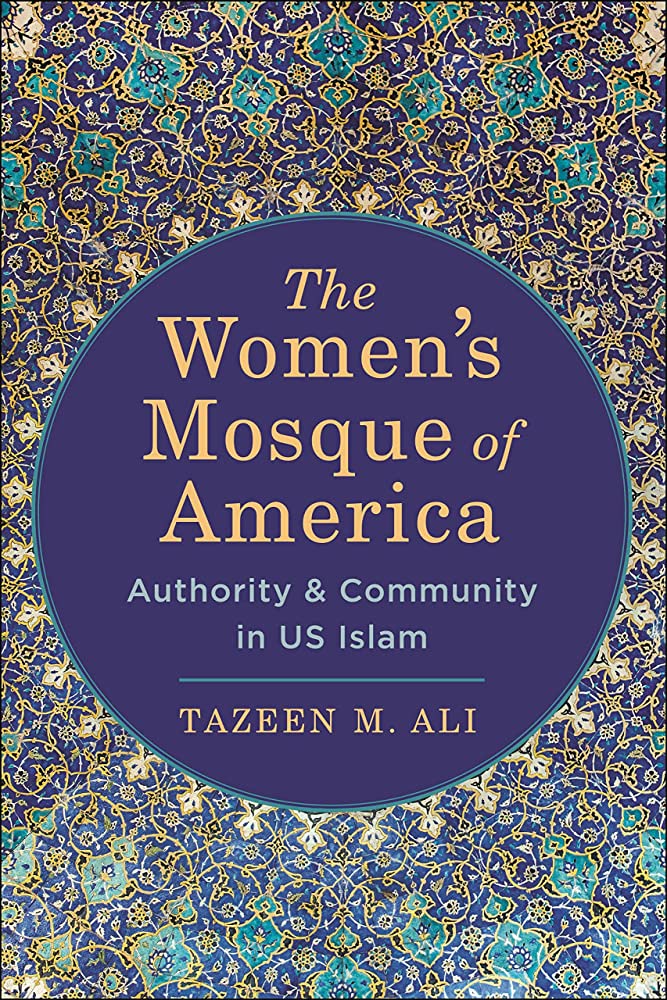Reviewed by Akpan Ubong-Abasi, Department of Religion
Tazeen Ali’s book The Women's Mosque of America: Authority and Community in U.S. Islam is centered on the emergence of the Women’s Mosque of America, an exclusive female-only mosque that began on August 28, 2015, in Los Angeles. The WMA is an organization that was founded to show and promote the notion that mosques can be gender-inclusive spaces. At the WMA, women call for and lead prayers; interpret the Quran; foreground their experiences in sermons; and commit to building multiracial, intra-faith and interreligious community. To this end, the WMA does not adhere to any of the Islamic legal schools, as its non-sectarian inclusivity accommodates a broad spectrum. The book highlights how women in the WMA are transforming notions of Islamic religious authority while negotiating patriarchal religious communities and Islamophobia in the United States.
When it comes to ritual authority, Ali discusses how leaders of the WMA argue for the legal validity of a women-led Jummah (Friday prayer services), stating that the legitimacy of women-led prayer is not a contemporary reformist phenomenon and that classical Islamic jurists have discussed this through the lens of the Quran, Hadiths, and Ijtihad. The WMA navigates women’s ritual authority by offering optional prayers for women (dhur) to establish validity and inclusivity, although the majority of WMA members believe in the ritual legitimacy of women-led Jummah.
Another goal of the WMA is to promote Quranic literacy by using an English translation of the Quran, a central aspect of their interpretive authority. Ali asserts that although Arabic is Islam’s scriptural and liturgical language, many Muslims unfortunately do not understand the words of the prayer and scripture they recite daily. WMA leaders see using an English translation of the Quran as helping to promote understanding and interpretative authority among lay Muslim women—a departure from the elitist, male-dominant interpretation of the Quran. For them, authenticity is associated with internalizing the meaning of the Quran, as opposed to its mere Arabic recitation. The WMA additionally emphasizes women’s embodied experiences as a valid basis through which scriptures can be interpreted. Leaders advocate for female-embodied experiences as a valid source of religious authority through which to approach the Quran on subjects such as sexual violence, marriage, and motherhood. Women’s embodied authority is utilized to resist patriarchal readings of sacred texts.
Ali implements an intersectional approach (gender, race, religious identities) in her work, bringing to the fore the multiplicity of experiences and inequalities in the study of religion and gender. This commendable approach relates, for example, how a Black Muslim woman’s experiences would differ from those of a Muslim South Asian or white woman, despite their shared gender and religious identity. It also helps to account for the different forms of discrimination LGBTQI women are subjected to amidst wider Islamophobia in the United States. In light of all these differences, Ali highlights how the WMA creates opportunities for its members to “cultivate a shared moral consciousness across racial identity by committing to social justice activism, countering Islamophobia and confronting anti-Black racism within Muslim communities” (152). Further, the WMA’s commitment to multiracial, intra/interfaith inclusivity is exemplified in its intersectional interfaith activism, which prioritizes women’s solidarity across religious identities within a U.S. sociopolitical climate where there is often hostility toward religious communities. At the WMA meetings, women from other religions, such as Judaism and Christianity, are always present. Intra-Islamic solidarity is exemplified by the participation of Shi’i, Sunni, and other sectarian Muslims, normalizing inclusivity across Islamic sects and its role in the construction of Islamic authority.
Ultimately, Ali’s work is a daring piece, promoting the notion that the WMA is not only an exclusive and alternative physical worship space for Islamic women, but also an important platform for Muslim women to speak authoritatively. However, one wonders if the WMA’s women-led community can be upheld without thinking of alternative modes of authority that decenter Arabic language expertise and formal Islamic credentialization more broadly. Both have been central to Islamic history, philosophy, and theology, and the interpretation of the religious text in its original language helps to undergird its meaning and authenticity. Additionally, it seems at times that Ali’s sympathetic analysis of the preaching and activities of the WMA in a way silenced her critical voice on gender and Islam beyond the WMA.
Overall, however, this book is an excellent contribution to the study of religion and women in the United States. As groundbreaking research on the WMA, Ali’s work showcases the different layers of intra- and inter-religious diversity in America and how the WMA is positioned to serve as the catalyst for monumental changes across U.S. Muslim communities. I recommend this book for scholars and students as a foundational text in the study of contemporary Islam in the U.S. This book will also be beneficial for religious, policy-making and interfaith organizations.

